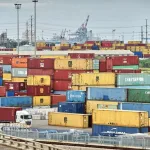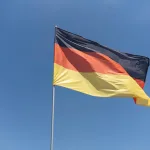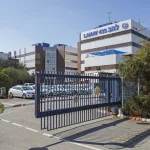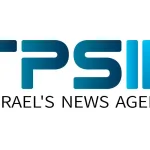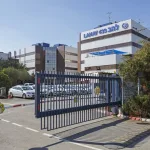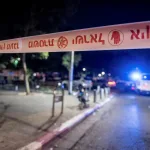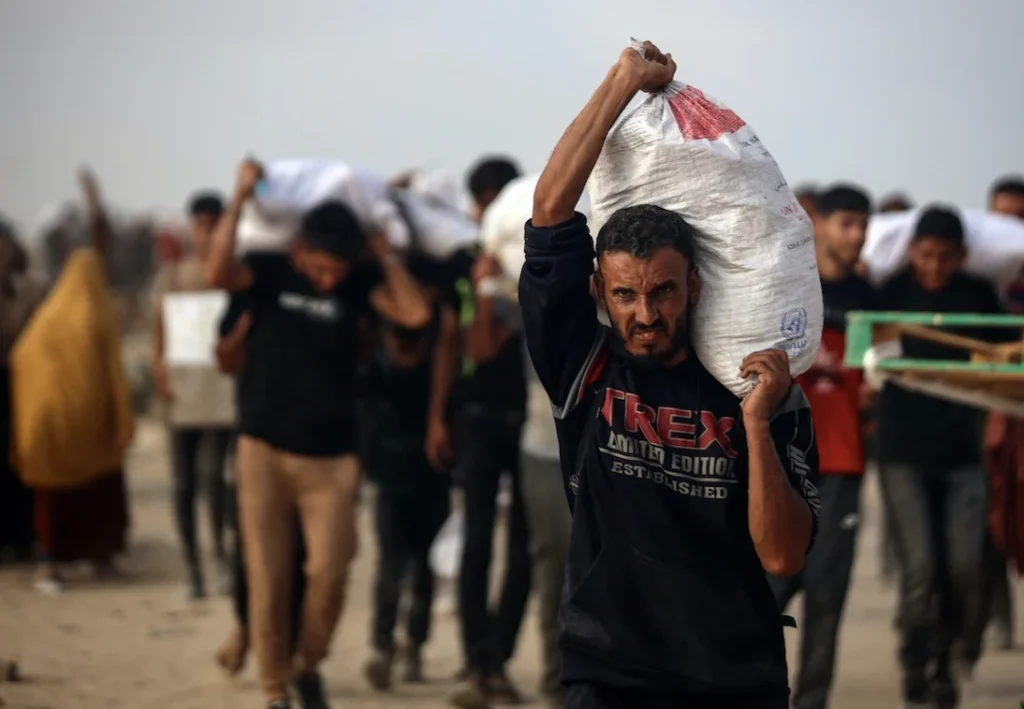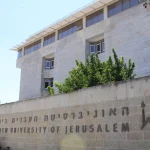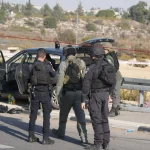Jerusalem, 22 August, 2025 (TPS-IL) — A new report by the U.N.-affiliated Integrated Food Security Phase Classification (IPC) declared that famine is occurring in Gaza, the first such classification in the Middle East. The IPC analysis, released on August 22, describes a catastrophic situation: hundreds of thousands of people facing starvation, collapsing food systems, and over 132,000 children under five at risk of death from acute malnutrition. The report calls for an immediate ceasefire to allow large-scale humanitarian access.
Yet, Israel’s Coordinator of Government Activities in the Territories (COGAT) strongly disputes the findings, claiming that the IPC’s methodology is flawed, its data politicized, and that the reality on the ground reflects unprecedented levels of humanitarian assistance.
The IPC declared that Gaza Governorate is already in Phase 5 (Famine), with famine projected to spread to Deir al-Balah and Khan Younis by the end of September. According to the analysis, nearly a third of Gaza’s population—over 640,000 people—will soon be in catastrophic conditions, while another 58% face “Emergency” status. The IPC emphasized collapsing food production, widespread disease, and a sharp rise in child malnutrition.
The report argues that famine conditions are already evident: over 20% of households facing extreme food shortages, acute malnutrition rates surpassing thresholds, and mortality likely exceeding famine levels. The organization insists that without a ceasefire and full-scale humanitarian access, famine will spread uncontrollably.
COGAT rejects these conclusions. In its response, Israel argued the IPC ignored official data and relied on Hamas-linked sources. According to COGAT, over 100,000 aid trucks have entered Gaza since the war began, with 300–400 trucks daily in recent weeks, 80% carrying food. Israel says this translates to more than 4,400 calories per person per day since early August.
COGAT highlights that more than 90 community kitchens serve over 600,000 hot meals daily, while 2.2 million food packages have been distributed with American NGO assistance. On August 20 alone, 250 aid trucks crossed from Israel, 390 were collected by international organizations, and 154 pallets were airlifted. That same day, 155 patients, mostly children, exited Gaza for treatment in the UAE. “Aid flows are robust, and food prices are plummeting,” COGAT emphasized.
Methodological Controversy
COGAT’s response specifically highlighted what it called the IPC’s “recent changes and moves to alter its methodology, aimed at ‘lowering the threshold’ for the ability to issue famine declarations in Gaza.” This methodological shift, COGAT argued, raises “serious questions about the integrity, fairness and professionalism of the IPC.”
This criticism aligns with reporting that emerged in U.S. media last week. A Washington Free Beacon investigation revealed that the IPC quietly lowered one of its core thresholds for famine, using a 15% threshold based on mid-upper arm circumference (MUAC) instead of the traditional 30% of children suffering acute malnutrition measured by weight-for-height.
Moreover, much of the IPC’s Gaza data reportedly comes from the Hamas-run health ministry and affiliated organizations, raising further doubts about its reliability.
The IPC’s famine declaration comes as UN agencies face mounting criticism over their Gaza operations. As of late July, more than 800 aid trucks sat waiting for pickup by international relief organizations at the Kerem Shalom crossing. Israeli officials blame systematic UN delays and inefficiencies, while UN representatives cite Israeli security protocols as the primary bottleneck.
While the UN-affiliated agencies continue to warn of “starvation” risks and calls for uninterrupted humanitarian access, operational actors such as the Gaza Humanitarian Foundation (GHF) point to record aid flows. In just under three months, GHF says it has delivered 130 million meals through 2.17 million aid boxes, with special programs for women and children. GHF staff, often risking their lives, insist that “food is reaching civilians despite enormous challenges.”
Notably absent from the IPC report is any mention of the Israeli hostages held by Hamas for nearly two years. Videos released by the terror group show emaciated captives, with recent footage revealing severe weight loss and deteriorating health conditions.
U.S. Ambassador Mike Huckabee highlighted this omission, posting on X in response to the report: ‘You know who IS starving? The hostages kidnapped and tortured by uncivilized Hamas savages. Maybe the over fed terrorists could share some of their warehouse full they stole with hungry people especially the hostages.’”
Challenges of Aid Diversion
The Press Service of Israel reporting in late July uncovered another layer: aid diversion and black-market profiteering. According to U.N. Office for Project Services (UNOPS) data, 85% of aid entering Gaza since May 19 has been stolen before reaching civilians, often by Hamas operatives. Videos and eyewitness reports describe armed men seizing convoys, threatening aid workers, and reselling donated goods at 300–500% inflated prices.
Markets in Gaza City show shelves stocked with aid-labeled goods, yet unaffordable for most families. Residents described fruit priced at 200 shekels ($59) and flour doubling in cost within weeks.
“They distribute the aid to traders instead of families,” one Gazan told TPS-IL. Experts note this manufactured scarcity fuels the hunger narrative while enriching Hamas and black-market actors.
The aid diversion has real consequences for ordinary Gazans. A local source in Gaza, speaking on condition of anonymity, told TPS-IL: “Protecting the aid is the best solution that will allow for the citizens to get it without the danger of theft. Unfortunately, what is happening is that the aid comes in and goes to the market with high prices. How it happens we cannot explain.”
Approximately 1,200 people were killed, and 252 Israelis and foreigners were taken hostage in Hamas’s attacks on Israeli communities near the Gaza border on October 7. Of the 50 remaining hostages, around 30 are believed to be dead.



